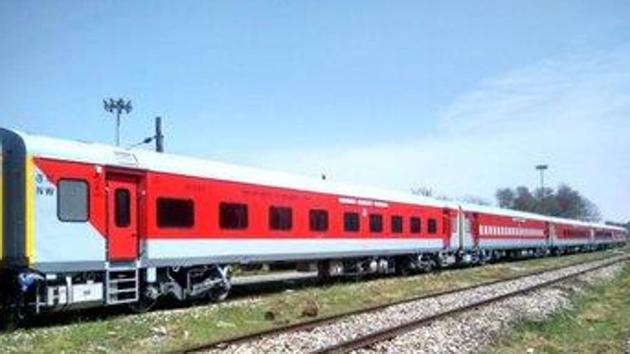Surveillance system, Braille signs, speed of 160 kmph in private trains’ draft proposal
Emergency talk-back option will be provided in the coach. Once pressed, it shall be possible for the passenger to communicate with the train driver or guard.
Electronic sliding doors in coaches, passenger surveillance system, automatic announcement display, destination information in Hindi, English and regional languages, among others, are some of the draft proposals for running of private trains in India. The train operations are expected to begin by 2023.

The ministry of railways on Wednesday issued draft specifications that need to be adhered to for plying private trains along 109 proposed routes.
The trains would also be designed to operate at a maximum service speed of 160 kmph.
“Train shall be designed so that they can operate safely at a maximum speed of 180 kmph during testing. The train shall be designed for a life of 35 years. The train shall be designed so as to minimise the risks posed by obsolescence,” the specifications said.
The trains will be designed to run at a maximum speed of 160 kmph. The ministry expects a reduction in journey time by around 10-15% at 130 kmph and around 30% at 160 kmph. Initially, they will run at 130 kmph and are slated to run at 160 kmph by March 2024, according to ministry officials.
A pre-bid meeting was held by the ministry of railways on Wednesday with the firms. Private players will be given full freedom to decide the fare for the passengers and will be given the option of either purchasing the trains or leasing them in terms of procurement.
“The Passenger Car Surveillance System (PRSS) shall comprise an IP based close circuit television (CCTV) network, surveillance cameras and other accessories as required with on board equipment for streaming of video to the central server for selected cameras. Each sitting car of train shall be provided with minimum six surveillance cameras to cover the passenger area. For a sleeper train, each car shall be provided with two surveillance cameras at appropriate location to cover the entire corridor. In addition, adequate numbers in the Gangway/vestibule area as deemed necessary shall also be provided, “ the draft specifications said.
According to the draft specifications, the private trains shall have a minimum of 16 (sixteen) passenger carrying cars. Minimum length of the train shall be 384 (three hundred eighty four) meters, buffer to buffer. The maximum train length shall not exceed that of the longest passenger train operating on the route of the railway network. For the avoidance of doubt, a car having a driving cab and also carrying the passengers shall be considered as a passenger carrying car.
Each coach will be provided with two digital destination boards displaying the originating, destination station, vehicle number and train number.
Emergency talk-back option will be provided in the coach. Once pressed, it shall be possible for the passenger to communicate with the train driver or guard.
“All Users shall be able to contact the Loco Pilot/Guard/TS by activating an emergency alarm signal handle to stop the Train and receive assistance. The effect on the train of an activated alarm signal may vary, depending on the location of the train and the lines on which it is travelling,” the specification said.
The trains will also have Braille signs. The specifications state normal and emergency equipment and controls which the users or crew may operate, shall be clearly identified, and operating procedures shall be presented in both text and graphic formats.
“Passenger emergency signs shall also be embossed in Braille raised typeface,” it said.
It also said that the trains shall be designed to keep the noise emissions as low as possible and it will be designed to prevent drumming, rattles or vibrations throughout its life.






